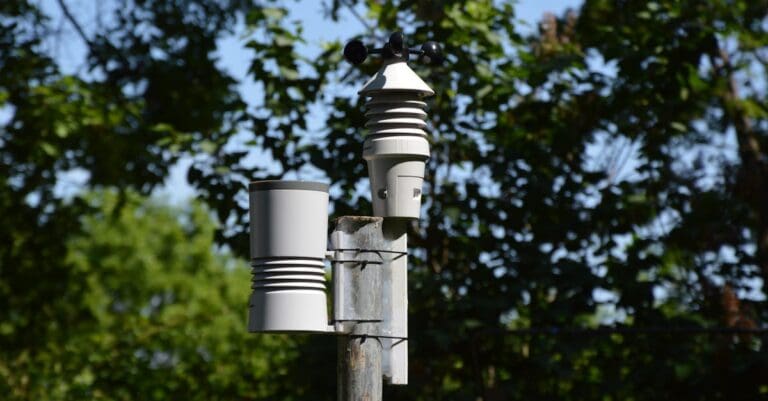What Everyone Ought to Know About AI Disaster Prediction
I recently discovered just how vital AI disaster prediction has become in our world. With natural disasters causing hundreds of deaths and billions in damages each year, improving our forecasting ability is crucial. A GAO report highlights how AI-driven algorithms analyze large data sets to identify patterns, potentially reducing forecasting time and increasing preparedness. This matters because better anticipation of events like hurricanes, floods, and wildfires could save lives and limit damage.
Understanding the different aspects of prediction technology, like machine learning in disaster management and AI forecasting systems, can seem overwhelming. However, these tools play a significant role in enhancing our disaster response capabilities. For example, AI examines seismic data to predict earthquake locations and uses satellite imagery to track hurricanes. While challenges such as data limitations and biases exist, advancements in these areas can provide a reliable early warning system, crucial for timely emergency responses.
I invite you to explore how various prediction and analysis technologies shape our approach to disaster preparedness. Let’s see how they improve accuracy, build trust in data, and ultimately help us stay ahead of potential catastrophes.

Photo provided by Google DeepMind on Pexels
In the article
- AI Disaster Prediction in Modern Times
- AI climate prediction Advances
- AI Geospatial Analysis Importance
- Future Prospects of AI in Disaster Prediction
AI Disaster Prediction in Modern Times
Role of AI Forecasting Systems
When I think about the role of AI forecasting systems, it becomes clear just how much they are changing the way we can prepare for natural disasters. These systems are quite amazing because they can analyze massive amounts of data to make predictions about things like storms, earthquakes, and floods. What I find most interesting is how they use patterns from past data to inform us about potential future events. For instance, using rainfall data, AI can predict flooding. This helps communities to brace themselves for severe weather, reducing damage and saving lives.
It’s worth noting that these AI models not only enhance disaster forecasts, but they also help in delivering more accurate predictions. According to a GAO report, these systems can improve prediction technology accuracy, letting us know beforehand about things like hurricanes and wildfires. Although some models still need development, the potential is enormous. To really get machine learning in disaster management working effectively, it’s crucial to deal with data limitations and biases, which remain significant challenges.
Machine Learning in Disaster Management
The role of machine learning in disaster management is something I find truly fascinating. It significantly improves response and preparedness by using learning algorithms to make predictions. This isn’t just about predicting when a disaster might happen, but also about understanding the best way to respond when it does. For example, AI can help allocate resources more efficiently during a crisis, ensuring that relief efforts are both timely and effective. By analyzing vast amounts of data, it can predict not only the likelihood of an event but also its potential impact.
One of the most important aspects here is the improvement of AI early warning systems. They provide timely alerts which can be the difference between life and death. Imagine being warned in advance about an impending earthquake or storm; it provides a crucial window of time to prepare. However, the accuracy of these predictions relies heavily on the quality of data collected, making it essential to enhance both data quality and collection practices to build trust data.
AI Early Warning Systems
AI early warning systems are wonderful tools for providing alerts about imminent natural hazards. They work by analyzing real-time data and issuing warnings that allow communities to evacuate promptly. This can be especially valuable when dealing with fast-moving disasters like tsunamis or hurricanes, where every minute counts. By improving warning time preparedness, these systems give people the chance to move to safety before disaster strikes. The ability of AI to analyze seismic data and issue AI disaster alerts for earthquakes is particularly noteworthy.
In addition to helping communities evacuate, AI early warning systems also play a critical role in improving the coordination of emergency services. With the use of satellite imagery analysis, they can pinpoint locations that need urgent assistance, enabling a faster, more focused response. However, I realize that for these systems to work at their best, they must overcome challenges like incomplete data and communication hurdles. Overcoming these barriers is key to enhancing their effectiveness and reliability.
Challenges and Limitations
While AI disaster prediction offers many promising benefits, it’s important to acknowledge the challenges and limitations that still exist. One of the main issues I see is data bias, which can skew predictions and lead to inaccurate forecasts. This is because AI models heavily rely on historical data, which may not always reflect future patterns, especially with the changing climate. Therefore, there’s a pressing need for improved data collection practices to help refine prediction models and make them more reliable.
Another limitation involves the AI risk assessment. It identifies high-risk areas, but sometimes it’s not as precise as needed. This is due to the complex nature of disasters and the multitude of variables that can affect outcomes. Therefore, continuous research and development are crucial to overcome these hurdles. By addressing these challenges, we can improve AI’s predictive power and ensure more effective disaster management strategies.

Photo provided by Google DeepMind on Pexels
AI Climate Prediction Advances
When I think about AI climate prediction advances, what stands out is how AI can now predict weather changes and climate impacts with increasing accuracy. By integrating with physics-based models, AI helps refine prediction models, making them more accurate and reliable. For me, it’s fascinating to see how AI can provide insights into future climate patterns, allowing us to prepare better for potential changes.
AI in Emergency Response
The role of AI in emergency response is something I find quite exciting. AI assists in optimizing relief resources, ensuring that aid reaches where it’s needed most. This not only enhances coordination during disasters but also improves the speed of decision-making, which is crucial in crisis situations. With AI-driven systems, emergency services can allocate resources more efficiently, helping to mitigate the effects of disasters.
Furthermore, one notable aspect here is how AI systems enhance coordination by providing real-time information on affected areas. This enables emergency responders to plan their actions more effectively, ensuring that help arrives quickly. However, it’s important to maintain ethical standards and privacy when employing these technologies to safeguard individuals’ rights while maximizing AI climate prediction capabilities.
Predictive Analytics for Natural Disasters
When discussing predictive analytics for natural disasters, I see it as a powerful tool for forecasting events like earthquakes and floods. By using advanced algorithms, AI can analyze vast datasets to forecast these events more accurately. This helps in allocating resources efficiently, ensuring that emergency services are well-prepared to deal with the aftermath. By predicting potential disaster management prediction, we can take proactive measures to reduce damage.
Moreover, predictive analytics focus on early detection and disaster readiness. This proactive approach allows communities to prepare ahead of time, minimizing the impact on human lives and infrastructure. The use of climate prediction models in conjunction with AI enhances these predictions, providing a clearer picture of what to expect. However, continuous improvement in data collection and analysis is necessary to refine these models further.
Data-Driven Preparedness Strategies
I believe that data-driven preparedness strategies are essential in today’s world to mitigate the impact of natural disasters. By leveraging data insights, these strategies allow us to plan effectively for potential hazards. This enables proactive disaster readiness, focusing on community safety and ensuring that people are better protected. For instance, by identifying high-risk areas, AI helps in strategizing resource allocation and risk identification.
- Effective risk identification helps prioritize areas in need.
- Resource allocation ensures efficient use of emergency assets.
- Community training enhances awareness and response capabilities.
Overall, these strategies improve safety protocols and enhance community resilience. It’s critical to employ AI geospatial analysis to identify vulnerable infrastructure, allowing for timely interventions and reducing disaster impacts. By incorporating these strategies, we can create safer, more prepared communities.

Photo provided by cottonbro studio on Pexels
AI Geospatial Analysis Importance
Infrastructure Damage Prediction
Predicting infrastructure damage using AI geospatial analysis is a critical aspect of disaster management. I see its value in forecasting potential damage sites, especially with the use of advanced machine learning techniques. These predictions allow for timely interventions, reducing damage to vital infrastructure like roads, bridges, and power lines. By analyzing topographical and weather data, AI can predict the impact on these structures, enabling better disaster mitigation strategies.
AI Risk Assessment
AI risk assessment plays a crucial role in identifying high-risk areas for intervention. Its ability to pinpoint vulnerable regions before disaster strikes is invaluable for proactive disaster management. This not only helps in deploying resources effectively but also minimizes the risk to human lives. By continually refining AI models and incorporating more accurate data, we can enhance disaster detection reduce and strengthen infrastructure resilience. The goal is to anticipate and address potential threats before they become catastrophic events.

Photo provided by Google DeepMind on Pexels
Future Prospects of AI in Disaster Prediction
Technological Innovations
Thinking about the future prospects of AI in disaster prediction, I’m optimistic about the technological innovations on the horizon. Incorporating AI into more systems promises to enhance our ability to predict and manage disasters more effectively. From improving forecast accuracy to refining response strategies, AI holds the potential to revolutionize disaster management. However, ensuring that these innovations are accessible and ethical remains a priority.
Regulatory and Ethical Considerations
As we move forward, it’s important to consider the regulatory and ethical implications of using AI in disaster prediction. Ensuring responsible AI use requires discussing best practices and privacy concerns, with a focus on protecting individual rights while maximizing AI’s benefits. I believe that fostering these discussions is key to building a framework that supports the ethical deployment of AI technologies in this field.
International Collaboration Efforts
The future of AI in disaster prediction also hinges on international collaboration efforts. By sharing insights and data across regions, we can foster global preparedness and enhance AI’s capabilities. This collaborative approach not only strengthens our response strategies but also enables us to tackle shared challenges, such as data limitations and biases. In my view, working together is essential for building a more resilient world.
Continuous Research and Development
Continuous research and development are necessary to address evolving challenges and enhance AI’s predictive power. As new technologies emerge, staying ahead of the curve is critical to maximizing AI’s potential in disaster prediction. By investing in research and refining AI models, we can improve accurate prediction technology and ensure more reliable forecasts. This ongoing commitment is crucial for advancing disaster management strategies.
Real-Time Solutions Implementation
Finally, implementing real-time solutions is vital for meeting immediate disaster response needs. Deploying effective AI strategies allows us to address issues as they arise, minimizing their impact and ensuring a swift recovery. Whether through improving early warning systems or enhancing emergency response capabilities, real-time solutions are essential for safeguarding communities and strengthening our overall disaster resilience.
Embracing Accurate Forecasting for Safer Communities
I believe it’s amazing how advanced prediction tools enhance our preparedness for natural disasters. By utilizing these cutting-edge systems, we can analyze vast amounts of data to provide early warnings and increase readiness. This means that communities are better equipped to handle events like floods, hurricanes, and earthquakes, minimizing damage and saving lives.
To make the most of these technologies, I suggest staying informed about the latest developments in predictive systems. You can engage with local emergency services to understand how they integrate these predictions into their plans. By doing so, you’ll not only be more prepared but will also foster a sense of trust and cooperation within your community.
Now, let’s take action by sharing our knowledge and resources with others. Whether it’s discussing it with friends or participating in local preparedness initiatives, every small step counts. Together, we can build safer, more resilient communities by embracing these incredible forecasting advancements.







